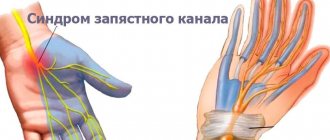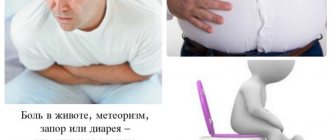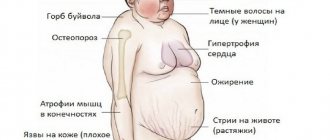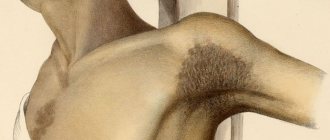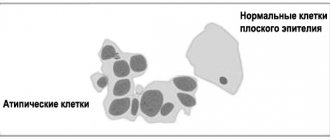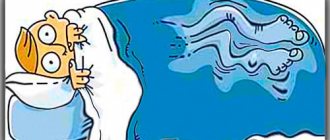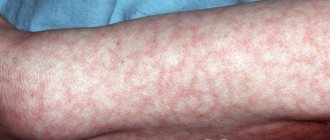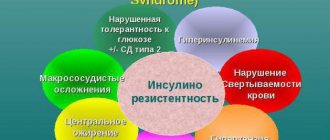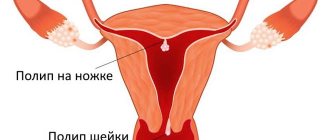Convulsive syndrome is a pathological reaction in response to various physical stimuli. Convulsive syndrome in children is characterized by episodes of sudden attacks of contractions of muscle structures. Episodes of pathology occur in the first three years of a child’s life, but convulsive syndrome in newborns also occurs.
Online consultation on the disease “Convulsive syndrome”. Ask a question to the specialists for free: Neurologist.
- Etiology
- Classification
- Symptoms
- Diagnostics
- Treatment
- Prevention
If symptoms are severe, help should be provided for seizures. Treatment should be comprehensive: intensive therapy for convulsive syndrome is carried out.
Symptoms and signs
There are several types of convulsive manifestations. Each of them has its own specific symptoms. But there are symptoms that are common to all types of seizure activity. The main ones are the following:
- Movements of an involuntary nature.
- Blue skin.
- Tension in the legs and arms.
- Lockjaw.
- Foaming at the mouth.
- Involuntary urination.
In addition, during attacks the baby may roll his eyes and cry loudly, his facial features are distorted. There may be a tremor of the chin and vomiting. Many of these symptoms may indicate other serious diseases, so you should not make a diagnosis yourself; it is better to rely on the competence of doctors in this matter.
Need for first aid
First aid for a seizure can be provided by any person who witnessed the event. It consists of simple and consistent actions that must be performed quickly and clearly.
Moreover, you need to understand that calling an ambulance is a mandatory action in such conditions. If you don't have time to make a phone call, ask people nearby for help. When talking to the dispatcher, indicate the nature of the seizures.
Let's consider the algorithm of actions for providing first aid for convulsive syndrome of any type.
Note!
Muscle spasms are most often accompanied by a fall. Therefore, first of all, it is necessary to prevent injury to a person by removing dangerous objects and placing soft things on the floor.
- Unbutton any items of clothing the victim may be wearing that may restrict breathing or interfere with the free flow of air.
- If the jaw is not clenched, roll the soft tissue into a small roll and insert it into the patient's mouth. This way you can avoid tongue biting.
- If possible, roll the person onto their side. In case of intense movements, fix your head in this position: this way, if vomiting occurs, the person will not be able to choke on the vomit.
Note!
If the patient's jaws are tightly clenched, they should not be forcibly opened to place tissue.
If before the onset of the attack the child was hysterical with loud crying and screaming, and with the onset of the spasm the complexion changed or cardiac activity was disrupted, first aid is to prevent the baby from breathing problems. To do this, you need to sprinkle it with cold water or bring a cotton wool moistened with ammonia to your nose.
Further assistance to the child and adult takes place in a medical institution.
Mechanism of occurrence and causes
In a child, seizures occur much more often than in an adult due to the fact that children’s nervous system is not yet fully formed. To put it another way, excitation processes are much more pronounced than inhibition processes.
Convulsions in infants occur due to asphyxia, cerebral hemorrhage, and also because the electrolyte ratio is disturbed. Older children suffer from convulsions due to increased temperature, due to poisoning, infectious diseases or oncological processes in the body. In order to eliminate this ailment, it is necessary to find out its root cause and treat the child.
The causes of seizures are different:
- For example, if a child has a water-salt imbalance, the problem can be solved by administering solutions with electrolytes. The dosage and frequency of administration are determined by the attending physician. A similar situation can occur due to frequent diarrhea or vomiting, not drinking enough good fluids at a fever, or in the summer heat. The water-salt balance may also be disturbed due to bleeding. As a rule, cramps occur for these reasons at night and in certain muscle groups.
- If a child is diagnosed with epilepsy, which is a serious chronic disease where neurons in the brain fire on their own, seizures can occur at any time. Such situations may be too dangerous for the child. It is important to diagnose epilepsy early and begin timely treatment.
- An elevated temperature can trigger an attack of muscle spasm. This can occur against the background of infectious diseases, influenza, ARVI, rotavirus infection, etc. Typically, a similar situation occurs when the temperature rises above 38⁰. If convulsions recur when a child has a fever, then his temperature should be lowered, starting from the division of 37.5⁰, you should not wait for such a reaction from the body.
- There are some preventive vaccinations, for example, DTP or ADS, after which babies develop seizures after a couple of days. Typically, children at risk are exempt from such vaccinations. These include premature babies, those who experienced complications at birth, or those who suffered trauma during childbirth. In addition, the risk of such problems may occur in newborns whose mothers abused alcohol, nicotine, drugs or sedatives during pregnancy. In some cases, such children are temporarily exempt from vaccinations.
- It happens that the cause of seizures in children is poisoning. There are many substances that cause it - toxins, plant poisons, low-quality food, etc. Poisoning can be recognized by the lethargy and drowsiness of the child. Sometimes he may hallucinate. His pupils are either too dilated or, conversely, constricted. In addition, the child’s mouth often becomes dry, a large amount of saliva is involuntarily released, and the heart beats faster. Pallor of the skin is noted. Further symptoms include nausea, accompanied by vomiting, diarrhea and fever. In such situations, under no circumstances should you treat poisoning yourself. The child should be immediately hospitalized.
- Convulsions in children associated with hysterics are also a common occurrence. Highly emotional children are susceptible to this problem when they are excited, scream or cry loudly. At such moments, the baby’s body becomes very tense, he lacks air, his face turns pale, and a cyanotic triangle appears in the area of the mouth and nose. Such behavior cannot be considered playing for the audience. The child is really sick. This is not a sign of epilepsy, but I still need medical help in such situations.
Causes
A seizure is a sign of increased neurogenic activity. This circumstance can provoke various diseases and conditions.
Causes leading to seizures:
Genetic disorders lead to the development of primary epilepsy.
- Perinatal disorders - exposure of the fetus to infectious agents, medications, hypoxia. Traumatic and asphyxial lesions during childbirth.
- Infectious lesions of the brain (meningitis, encephalitis).
- Effect of toxic substances (lead, mercury, ethanol, strychnine, carbon monoxide, alcohol).
- Withdrawal syndrome.
- Eclampsia.
- Taking medications (aminazine, indomethacin, ceftazidime, penicillin, lidocaine, isoniazid).
- Traumatic brain injury.
- Cerebrovascular accidents (stroke, subarachnoid hemorrhage, and acute hypertensive encephalopathy).
- Metabolic disorders: electrolyte disturbances (eg, hyponatremia, hypocalcemia, overhydration, dehydration); disturbances of carbohydrate (hypoglycemia) and amino acid metabolism (with phenylketonuria).
- Brain tumors.
- Hereditary diseases (for example, neurofibromatosis).
- Fever.
- Degenerative brain diseases.
- Other reasons.
Certain causes of seizures are typical for certain age groups.
Types of convulsive manifestations
Seizures in children can manifest themselves in different ways. Depending on this, they are conventionally divided into types. The criteria for this phenomenon are the area of distribution, the reasons for its occurrence, the stage of stress and other features of the process. If characterized by the area of distribution, seizures can be partial and generalized. Partial spasms are accompanied by muscle contraction of individual parts of the body. This can be expressed by muscle twitching, both while awake and during sleep.
The whole body cramps with generalized cramps. In such cases, it tenses like a string. His head is thrown back, his lower limbs are extended, his arms are bent at the chest, his teeth are clenched, and his pupils do not react to light. There is pallor of the skin, which turns blue over time. Often such situations are accompanied by loss of consciousness. There are other types of seizures that you also need to learn to distinguish. The correct diagnosis and timely treatment begin depend on this.
Tonic
Such cramps in infants are accompanied by prolonged muscle contraction. As a result, the limbs freeze. They do not bend or unbend. The baby's body is stretched. At this time, his head can be in two positions - thrown back or lowered onto the chest. The duration of tonic convulsions is long. The fact that they occur is a consequence of the fact that the baby’s brain structures are too overexcited. Basically, similar symptoms appear in the extremities. But there are times when cramps spread to the stomach and face area.
Clonic
During clonic seizures, muscles contract rapidly. The time that a baby's seizures last can be called dynamic. Outwardly it looks like a twitch. The appearance of clonic seizures occurs due to pathological discharges in the centers of the brain and muscles. It is necessary to look for the true cause of their appearance and treat the underlying disease, otherwise seizures will occur even more often.
Tonic-clonic
There are situations when muscle tone increases and their contraction occurs with periodic alternation. If timely measures are not taken and the cause of what is happening is not found, everything can end in loss of consciousness. In some cases, the child may go into a coma. This type of seizure may be a manifestation of epilepsy.
There is another type of such convulsions - myoconic. They differ from tonic-conical ones in that they are painless in the child. Such convulsions most often occur in a child during sleep. This can occur due to hiccups or overeating. Cramps in the child's legs end with him waking up and crying. Often the cause of their appearance may be some serious illness inherited by the baby.
Usually they are single. If convulsions recur, this indicates that secondary myocone has occurred, which may indicate neurological diseases.
Fibrillary spasms in children
Fibrillary convulsions in children occur against the background of increased body temperature. This occurs due to insufficient development of the baby’s brain and its increased sensitivity to irritants. This occurs at temperatures above 38⁰. Fibrillary seizures most often appear in preschool children and can occur even in children who have never had them before.
What are the symptoms of fibril spasms in children with fever? They can be recognized by the following signs:
- The child becomes distant and may even lose consciousness.
- His skin turns pale and his breathing slows down noticeably.
- The baby's muscles twitch, after which they freeze.
It is worth noting that febrile seizures in children are not considered normal. But they are not always dangerous. This phenomenon occurs due to the influence of bacteria or viruses. In some cases, the body reacts this way due to a genetic predisposition.
Parents should understand that as hyperthermia progresses rapidly, seizures become more likely.
There is another type of seizures - low-grade seizures. This happens if the baby’s temperature has been sharply reduced to low levels. For example, a child had a temperature of 39⁰ and it was sharply reduced with medications to 37⁰. Not all kids can easily endure such races. Some of them respond to this effect of medications and develop low-grade seizures. In case of complications of the disease, they may recur. Sometimes febrile seizures can occur in children after vaccination. In such situations, it is better for the child to be under the supervision of doctors.
Infectious mononucleosis caused by the Epstein-Barr virus can also trigger febrile seizures in children. This disease is difficult to diagnose immediately because all its symptoms resemble a common sore throat. In fact, the virus is herpetic in nature. Many inhabitants of our planet are carriers of the virus. But its activation and negative reaction of the body occurs precisely in childhood, when the body is not yet strong enough to fully protect itself. Against this background, mononucleosis develops. Fortunately, after a child suffers from this disease, he develops immunity to it.
Types of seizures
In medicine, attempts have been made repeatedly to create the most appropriate classification of seizures. All types of seizures can be divided into two groups:
- Partial;
- Generalized.
Partial seizures are triggered by the firing of neurons in a specific area of the cerebral cortex. Generalized seizures are caused by hyperactivity of a large area of the brain.
Partial seizures
Partial seizures are called simple if they are not accompanied by impaired consciousness and complex if they are present.
Simple partial seizures
They occur without impairment of consciousness. The clinical picture depends on which part of the brain the epileptogenic focus occurs. The following signs may be observed:
- Cramps in the limbs, as well as turning of the head and torso;
- Feelings of crawling on the skin (paresthesia), light flashes before the eyes, changes in the perception of surrounding objects, sensation of an unusual smell or taste, the appearance of false voices, music, noise;
- Mental manifestations in the form of deja vu, derealization, depersonalization;
- Sometimes different muscle groups of one limb are gradually involved in the convulsive process. This condition was called the Jacksonian march.
The duration of such a seizure is only from a couple of seconds to several minutes.
Complex partial seizures
Accompanied by impaired consciousness. A characteristic sign of a seizure is automatism (a person can lick his lips, repeat some sounds or words, rub his palms, walk along the same path, etc.).
The duration of the attack is one to two minutes. After a seizure, there may be a short-term clouding of consciousness. The person does not remember the event that occurred.
Sometimes partial seizures transform into generalized ones.
Generalized seizures
Occurs against the background of loss of consciousness. Neurologists distinguish tonic, clonic and tonic-clonic generalized seizures. Tonic cramps are persistent muscle contractions. Clonic - rhythmic muscle contractions.
Generalized seizures can occur in the form of:
- Grand mal seizures (tonic-clonic);
- Absence seizures;
- Myoclonic seizures;
- Atonic seizures.
Tonic-clonic seizures
The man suddenly loses consciousness and falls. The tonic phase begins, lasting 10-20 seconds. Extension of the head, bending of the arms, stretching of the legs, and tension of the torso are observed. Sometimes a kind of scream occurs. The pupils are dilated and do not respond to light stimuli. The skin takes on a bluish tint. Involuntary urination may occur.
Then comes the clonic phase, characterized by rhythmic twitching of the entire body. There is also rolling of the eyes and foaming at the mouth (sometimes bloody if the tongue is bitten). The duration of this phase is one to three minutes.
Sometimes, during a generalized seizure, only clonic or tonic convulsions are observed. After an attack, a person’s consciousness is not restored immediately; drowsiness is noted. The victim does not remember what happened. Muscle pain, abrasions on the body, bite marks on the tongue, and a feeling of weakness can be used to suspect a seizure.
Absence seizures
Absence seizures are also called petit mal seizures. This condition is characterized by a sudden loss of consciousness for just a few seconds. The person becomes silent, freezes, and his gaze is fixed at one point. The pupils are dilated, the eyelids are slightly lowered. Twitching of facial muscles may be observed.
It is typical that a person does not fall during an absence seizure. Since the attack does not last long, it often goes unnoticed by others. After a few seconds, consciousness returns and the person continues to do what he did before the attack. The person is not aware of the event that has occurred.
Myoclonic seizures
These are seizures of short-term symmetrical or asymmetrical contractions of the muscles of the trunk and limbs. Convulsions may be accompanied by a change in consciousness, but due to the short duration of the attack, this fact often goes unnoticed.
Atonic seizures
Characterized by loss of consciousness and decreased muscle tone. Atonic seizures are a faithful companion of children with Lennox-Gastaut syndrome. This pathological condition is formed against the background of various abnormalities in brain development, hypoxic or infectious damage to the brain. The syndrome is characterized by not only atonic, but also tonic seizures with absences. In addition, there is mental retardation, paresis of the limbs, and ataxia.
Diagnostics
In order to correctly diagnose seizures in adolescents and young children, many tests must be completed. But before this, it is important for the doctor to understand what hereditary factors may contribute to this, what diseases were recently suffered and whether problems arose during pregnancy. Parents should closely monitor the frequency and intensity of seizures and inform the doctor about the time between seizures. In such situations, it is important to first exclude diseases of a neurological and somatic nature.
To make an accurate diagnosis, the doctor recommends undergoing the following examinations:
- Analysis of urine, blood and spinal fluid.
- Electroencephalography.
- CT scan.
It is important to check the fundus of the eye.
Parents who notice their child's seizures during sleep should monitor their duration and frequency and notify the doctor.
Ultimately, it will not be difficult for a specialist to determine the type of seizures and find out the cause of their occurrence, knowing their characteristic clinic. After diagnosis, it is necessary to initially eliminate the underlying disease that provokes seizures.
Prevention of seizures
- Physical therapy helps balance brain function. Breathing training and dosed physical activity have a beneficial effect on the functioning of the nervous system, increase resistance to stress and prevent a number of diseases.
- Sports activities should exclude possible head injuries.
- A patient with convulsive syndrome should give up bad habits. An overdose of toxic substances provokes convulsive syndrome.
Rejection of bad habits
- For the respiratory system to function properly, it is necessary to exclude hypothermia or stuffiness. Fresh air ensures good quality sleep, so walks should be included in your daily schedule.
- When a child develops epilepsy, the best preventive measure against seizures is increased parental care. It is very important for a person with epilepsy to feel like a full member of society.
First aid for seizures in children
Many parents, when faced with a similar problem for the first time, begin to panic and are unable to help their baby. Therefore, the question of what to do if a child has seizures should become relevant for everyone who is planning the arrival of a new family member. The main thing is not to get confused and gather all your strength. Ideally, it would be to call an ambulance. But this method does not always work. After all, convulsions can begin abruptly and last from 2 seconds to 10 minutes. During this time, doctors simply may not have time to get there. The actions of parents faced with a similar problem should follow the following algorithm:
- It is necessary to undress and remove the child’s shoes; they should not embarrass him.
- The child should be placed on his side. It is undesirable for the surface to be too soft. Or try to make sure his head is turned to the side.
- With prolonged convulsions and salivation, it is necessary to constantly wipe away the mucus. There should be a roll of cloth between your baby's teeth to help prevent the tongue from sticking out. The use of hard objects in this case is contraindicated; they can harm the child’s teeth.
- If the baby loses consciousness, you must try to bring him back to his senses and do everything possible so that the fainting does not happen again until the ambulance arrives. In this case, a cotton pad soaked in ammonia, gentle touches and pleasant conversations with the baby come to the rescue.
- Convulsions can occur in a child when he cries loudly. First of all, he should be calmed down. The onset of an attack can be avoided by lightly sprinkling cool water on the baby and gently patting the cheeks. After this, you can use a sedative. Valerian is effective in this case at the rate of 1 drop per 1 year old baby. With the help of sedatives, you can prevent convulsions during sleep in a child, which appear against the background of vivid dreams.
- If a child has cramps in their legs, a light massage will help.
- Febrile convulsions that occur as a result of increased body temperature can be treated with Paracetamol or Ibuprofen. In addition, wraps or cool compresses are considered effective in this case. It is worth clarifying that if the baby is pale, chills and fever, cool compresses are contraindicated. These symptoms may indicate that the baby has white fever, which is quite dangerous for him.
- In some cases, No-shpa helps with seizures. With the help of this drug it is possible to relieve muscle spasms.
The worst thing in such situations is for parents of babies who are absolutely helpless and cannot understand what is happening to them. First aid for seizures in children in such cases should be provided clearly and systematically.
First aid
First aid for seizures in children that parents can provide is to quickly call an ambulance and prevent injury to the child. The baby needs to be laid on a flat surface, and the head should be raised so that it does not beat, passing a rolled up blanket under it.
Limbs must not be forcibly straightened and nothing must be put into the mouth. This can lead to serious consequences. All objects that could injure the child must be removed. You should completely unbutton your outerwear, take off your shoes, ease your breathing and ventilate the room.
Help with seizures in children, especially those who have appeared for the first time, also includes a warm, sweet drink after an attack. After all, even an ambulance first administers glucose - 25% at a dose of 4 ml per kilogram of the child’s weight. This allows you to immediately eliminate the hypoglycemic state and prevents a recurrent attack, especially in the case of previously undiagnosed diabetes.
Just under no circumstances should you give your baby something to drink while the attack lasts. This can lead to aspiration and suffocation: you can drink only after the attack has ended.
If we are talking about febrile convulsions, then the fastest way to achieve a decrease in body temperature is by physical means, for example, wiping the baby with a damp towel or vinegar. You need to be careful with vodka, since a child’s skin absorbs various substances well, including alcohol. You need to wipe especially carefully in the area of natural skin folds, as well as in the forehead area.
After the temperature drops, you can give an antipyretic - as in syrup, for example, Efferalgan or Panadol.
- It is strictly forbidden to give aspirin to children up to 11-12 years of age, in order to avoid the development of a serious complication - Reye's syndrome.
Should I agree to hospitalization?
Never refuse hospitalization, especially if seizures appear for the first time and against a background of normal temperature. If, during febrile convulsions, a decrease in temperature, as well as B vitamins, calcium and magnesium gluconate, administered by an ambulance doctor, can lead to long-term relief of convulsions, and their nature is clear, then when they occur, especially for the first time and in newborns, requires hospitalization.
In the hospital, the concentration of electrolytes is quickly determined and special therapy is prescribed: administration of magnesia, sodium bicarbonate. For convulsive status and relapses, phenobarbital, Relanium, other anticonvulsants and benzodiazepines are administered. GHB, or sodium hydroxybutyrate, has a good effect.
Hospitalization in an infectious diseases hospital is also required for persistent fever, repeated convulsions, the appearance of various types of rashes, and headaches. In this case, treatment of the primary disease, for example, viral meningitis, is necessary. This will also reduce the risk of recurrence of seizures.
If convulsions during meningitis are persistent, do not stop, and an increase in blood pressure occurs, there is hyperthermia and impaired consciousness, then the administration of sodium thiopental is titrated intravenously, followed by a dose reduction. If necessary, the baby is transferred to artificial ventilation with the introduction of medicated sleep and the use of barbiturates
Treatment
If convulsions occur in a child without fever, they are not associated with age-related changes and excessive overexcitation of his nervous system, diagnosis and treatment should begin immediately.
The doctor finds out the real cause of the seizures and prescribes medicine.
Most often in such cases, anticonvulsants, sedatives, and drugs that have a beneficial effect on metabolism are used.
A positive effect can be achieved if medications are taken in combination with massages, therapeutic exercises and reflexology.
In case of serious violations, surgery may be necessary.
Epilepsy, tetanus and intoxication are treated in a hospital setting. Infants who have seizures should be immediately hospitalized for further medical observation. Even if this happened to them once, they must be registered and monitored for at least a year.
Convulsive syndrome: treatment of epilepsy
- Children with epileptic seizure disorder may outgrow the condition. It is very important to follow the recommendations of the neurologist. In the absence of convulsive attacks for a long time, doctors cancel the diagnosis. The patient is recommended to be monitored annually by a neurologist.
- After each epileptic seizure, the patient must receive drug treatment for the next three years. The action of the drugs is aimed at preventing recurrent attacks. Every seizure in childhood has a negative impact on mental development.
- provoke epilepsy . Adult patients should not treat diabetes mellitus and cardiovascular diseases.
- For recurring seizures, anticonvulsants must be taken. Blood tests monitor the effects of medications taken
Drugs for treatment
The main antiepileptic drugs include:
- For extensive convulsive seizures - carbamazepine, phenobarbital, phenytoin.
- For psychomotor seizures - clonazepam, beclamide, sodium valproate.
- Minor epileptic seizures – trimethadione, ethosuximide, lamotrigine.
To diagnose epilepsy, several hardware studies are used - MRI, electroencephalography, angiography, computer diagnostics.
- With positive dynamics, the dosage of medications is gradually reduced. If a seizure does not recur within two years after stopping the medication, the patient is considered healthy.
- With an accurate diagnosis of a tumor and other structural changes in the brain, surgical intervention is possible.
Survey
Consequences
There are cases when a convulsive syndrome that appears in a newborn baby ends in death. This especially happens with premature babies. If attacks are repeated, the infant may develop encephalopathy or ischemic stroke. Sometimes death occurs due to meningococcal infection.
Fibral spasms or seizures caused by abnormal metabolism can be cured. With proper therapy, these problems will eventually become a thing of the past. This is the case if convulsions occur in infants. If they affect an older child, this is fraught with oxygen starvation, as well as developmental delays.
We must not forget that convulsions are accompanied by loss of consciousness and impaired coordination of movements. This poses a risk of falling onto hard surfaces and causing injury.
Children prone to epilepsy should not be left alone in the room while sleeping at night. They may fall out of bed or catch their tongue during an attack.
Etiology
The lesion appears against the background of altered activity of neural elements. Most often, convulsive syndrome occurs in children, but seizures can also occur in adults. There is a pathology in a newborn.
The etiology is quite diverse:
- birth defects;
- damage to the structures of the nervous system;
- hereditary diseases;
- tumor-like neoplasms;
- regulation failures.
The causes of convulsive syndrome are often associated with prolonged stress. Convulsive syndrome in adults occurs during frequent stressful situations and an unstable psychological state.
The causes of pathology differ significantly depending on the person’s age:
- in children under 10 years of age, the problem is provoked by head injuries, damage to the central nervous system, and hyperthermic convulsive syndrome occurs (these are the true causes of convulsive syndrome in children);
- 11–25 years old - cancer, trauma;
- 26–60 years – oncological processes, metastatic and inflammatory processes of the brain;
- after 60 years - drug overdose, Alzheimer's disease, often occurs as a complication after a stroke.
The manifestation of the syndrome may be associated with a number of reasons that need to be determined before starting therapy.
Types of seizures and classification
There are three types of seizures, they can be tonic, clonic and clonic-tonic:
- The tonic form involves slow muscle contraction. Convulsions spread to the torso, face, neck and arms, sometimes affecting the respiratory tract. During a seizure, the patient's head is thrown back, the teeth are clenched, and in most cases, loss of consciousness occurs.
- The clonic type of seizures is characterized by frequent rhythmic muscle contractions, which can be both general and local. They spread throughout the respiratory system, causing hiccups and stuttering.
- Clonic-tonic or mixed type of seizures occurs in shock and coma.
Baby treatment methods
With age, febrile seizures disappear altogether. In order to prevent pathology, the child should not suffer from infectious diseases.
If the syndrome does not disappear, the child develops epilepsy. Therapy for convulsive syndrome is provided only by qualified doctors. If convulsions last more than twenty minutes, you should call an ambulance.
Recommended: Children with disabilities
Therapy for convulsive syndrome is divided into 3 areas:
- Maintaining the main functions of the body, that is, breathing and blood circulation. The doctor ensures airway patency, frees the mouth from saliva and vomit.
- Anticonvulsant therapy. The first aid drug used is diazepam. It is administered intravenously or intramuscularly. Its action lasts for an average of two hours.
- Selection of anticonvulsant therapy. Antipyretic drugs are used, glucose or calcium supplements are administered. Maintenance medications are often prescribed to help prevent recurrence of seizures. Each medication is prescribed individually for the child.
If you have a convulsive symptom, you should contact a pediatrician or neurologist. Repeated seizures occur in 40 percent of cases, and if the patient has relatives who had febrile seizures, the likelihood increases.
The nature of convulsive muscle contractions
Convulsions are clear evidence that a pathological process is occurring in the child’s body. In order to take timely measures and help the newborn, you need to navigate the particular signs and symptoms of seizures of various natures. Febrile seizures in infants occur at high temperatures . How can you differentiate them from symptoms of CNS injury or internal infection? And what should be the first aid?
Convulsions in newborns indicate serious disturbances in the functioning of the central nervous system, metabolic processes, and may be a reaction to high temperature. This is due to the fact that the baby’s nervous system has not yet fully formed. In addition, the tendency to convulsive reactions is hereditary, in particular, it can manifest itself if one of the child’s relatives has epilepsy.
Types
Febrile seizures in a child can be of different types and locations.
Based on the nature of the course, seizures are divided into several types. An attack accompanied by a high temperature may include a series of convulsive contractions of various types.
- Clonic . They are expressed through frequent (1-3 times per second) muscle twitching, in extreme forms they can lead to loss of consciousness.
- Tonic . Accompanied by long-term static contractions of the muscles of the whole body. They are easy to identify by their specific arched posture and thrown back head. Sometimes accompanied by apnea (short-term breath holding). The attacks last about a minute.
- Atonic . The opposite of a tonic state, when the muscles of the entire body simultaneously relax. This usually results in involuntary urination and loss of feces.
- Small . They appear as trembling muscles in the arms and legs, blinking, or bluish spots on the skin. Can last quite a long time.
Convulsions are divided into those that spread throughout the body - generalized, and those that affect specific areas - focal.
Diagnostic measures
First of all, if parents whose child is suffering from seizures contact the pediatrician, the doctor finds out the presence of a hereditary factor, conducts a survey of the parents and the child (if age allows) to determine what could provoke these manifestations. It is advisable to provide the doctor with all the information about the peculiarities of labor, possible pathologies discovered during intrauterine development, and previous illnesses suffered by the child. Usually the baby is prescribed a somatic and neuralgic examination, laboratory tests of blood, urine, and cerebrospinal fluid are performed.
One of the frequently prescribed diagnostic methods is electroencephalography.
When examining the fundus of the eye, you can identify some pathologies that can cause seizures. In some cases, to obtain the most complete information, the child is prescribed a computed tomography and spinal puncture.
Symptoms
Shakespeare describes the epilepsy or "falling sickness" of the famous Roman statesman Julius Caesar in Act I, Scene II of the tragedy Julius Caesar.
Epilepsy was known as Hercules' disease for over 2,000 years because Hercules was known to suffer from it. This is stated in the fifth main scene of Euripides' play Hercules Furens. Described in the following words: "And everyone looks at the man who is speechless and completely changed, whose reddened eyes are curled up, from whose beard dripping."
The intensity of symptoms varies greatly among individuals. The type of seizure depends on a number of things, such as the part of the brain involved and the underlying cause. They range from simple eye rolling to loss of consciousness.
Most patients experience the same symptoms over and over again, while others experience different symptoms each time. There are some disorders that cause symptoms similar to seizures. These are panic attacks, transient ischemic attacks, and other disorders that cause loss of consciousness.
An aura, consisting of strange sensations, occurs in some people before a seizure. These sensations include tingling sensations, detection of a strange odor, and emotional changes. Seizures may occur continuously without explanation.
Not all seizures represent epilepsy. The term epilepsy is used when a person suffers from 2 or more apparently unprovoked seizures at least 24 hours apart.
Repeated seizures cause brain damage, so the cause must be diagnosed and treated. In some cases, when the cause is unknown, it is necessary to prevent recurrence of attacks by taking daily medications.
Attacks can be focal (partial) or generalized. In partial seizures, twitching is observed in a limb or part of the body.
These attacks occur when part of the brain is affected. On the other hand, generalized seizures affect the entire body. Generalized seizures occur when both sides of the brain are affected. The patient often loses consciousness
Some of the nonspecific symptoms:
- Headache;
- Changes in energy levels or mood;
- Feeling dizzy;
- Loss of consciousness;
- Memory loss.
Disease prevention
Prevention of seizures is based on a balanced diet and muscle exercise. If the disease is detected, treatment must be started immediately to prevent complications from developing. During convulsions, it is necessary to maintain a water-salt balance. The child's diet should include:
- Cottage cheese
- Cheese
- Kefir
- Greenery
- Nuts
- Banana
- Cabbage
- Legumes
If the cramps are painful, the child can be given a light massage. You can take painkillers to help relax your muscles. The child must have comfortable shoes. The baby's life should proceed without stress and overexertion. Sleep and rest are required. If necessary, you can drink mineral complexes. Any use of medications should be discussed with a general practitioner. The most important cause of seizures is an increase in body temperature, so parents should not allow the temperature to rise to 39 degrees. The child should sleep on a hard surface in a well-ventilated room. Under no circumstances should a child be left alone during a seizure.
If seizures continue frequently, you will need injections of anticonvulsant medications. The decision about insertion should be made only by the doctor. If the attack lasts no more than 15 minutes, maintenance therapy is acceptable.
Diagnostic approach
For convulsive syndrome, CT and MRI of the brain are mandatory tests. In addition, the following research methods are used:
- EEG (electroencephalography);
- radioisotope scanning;
- radiography of the skull;
- cerebral angiography;
- examination of cerebrospinal fluid (if meningitis and encephalitis are suspected);
- blood test (to detect intoxication).
In the diagnostic process, factors such as a person’s age, past illnesses, the presence of epilepsy and convulsive syndrome in the patient’s immediate family, previous head injuries or infectious diseases, the presence of congenital anomalies and tumors are taken into account.
Non-epileptic seizures
Such seizures occur relatively often in children. A seizure can be caused by many factors. As a rule, convulsive syndrome is observed in infants, but older babies can also suffer from it, for example, with high fever and infectious diseases. Let us first consider the causes of seizures in a child in the first month of life:
- birth trauma (brain hemorrhages, tissue damage);
- low sugar levels (hypoglycemic cramps);
- oxygen starvation, which leads to brain swelling;
- low zinc content in the newborn’s blood (fifth day cramps);
- toxic effects of bilirubin on the central nervous system (hemolytic disease);
- calcium metabolism disorder (spasmophilia, or tetanic convulsions);
- violation of the metabolism of vitamin B6, or pyridoxine;
- congenital heart defects and diseases of the cardiovascular system;
- development of brain defects (occur rarely, approximately 10% of all cases);
- maternal use of alcohol, drugs, and certain medications during pregnancy (withdrawal seizures).
The risk group includes premature, low birth weight babies born as a result of emergency caesarean section.
The first to occur are convulsions caused by birth trauma or asphyxia. The syndrome develops in the first eight hours of a baby's life. With low sugar levels (hypoglycemic cramps), the symptom is accompanied by sweating, restless behavior, hyperactivity and breathing problems. Such convulsions appear in the first two days.
Fifth day seizures occur between the third and seventh day of an infant's life. What do seizures look like in a child? These are short-term twitches, shudders, nods of the head, curling and clenching of fingers, a “spasm” of looking up, which can be repeated up to forty times a day. If the symptom is accompanied by jaundice, then we can talk about convulsions due to hemolytic disease.
Traditional methods of treatment
Actively used:
- Adonis in spring. One tablespoon is diluted into a glass of boiling water. Take a spoonful three times a day.
- Cloves with sugar.
- When bringing arms or legs together, use mustard oil.
- Poppy petals are boiled in milk or water.
- Hot wormwood is mixed with olive oil, and then infused for up to eight hours. The mixture is taken 2 drops per spoon of sugar.
- Chamomile oil is used as an external remedy for seizures.
Further assistance in a medical facility
Relieving a person of a convulsive syndrome is possible only after the cause of its occurrence has been established and measures have been taken to eliminate it.
Measures to relieve the patient from seizures are carried out in the following areas:
- prevention of seizures and anticonvulsant therapy (taking sedatives);
- restoration and maintenance of normal functioning of the respiratory and circulatory systems;
- administration of drugs intravenously (in the presence of severe seizures);
- normalization of nutrition to restore body functions.
Anticonvulsant therapy is carried out using:
- Diazepam;
- Lorazepam;
- Phenytoin.
In cases where treatment with the listed drugs does not produce an effect, Phenobarbital is prescribed, which has a strong effect on the process of neuronal excitability.
Neurologists do not prescribe long-term therapy after the first seizure, since seizures caused by conditions such as fever, acute infection, poisoning or metabolic disorders are relieved by treatment of the underlying disease.
Article on the topic: Spondyloarthrosis of the lumbosacral spine - causes, symptoms and treatment methods
